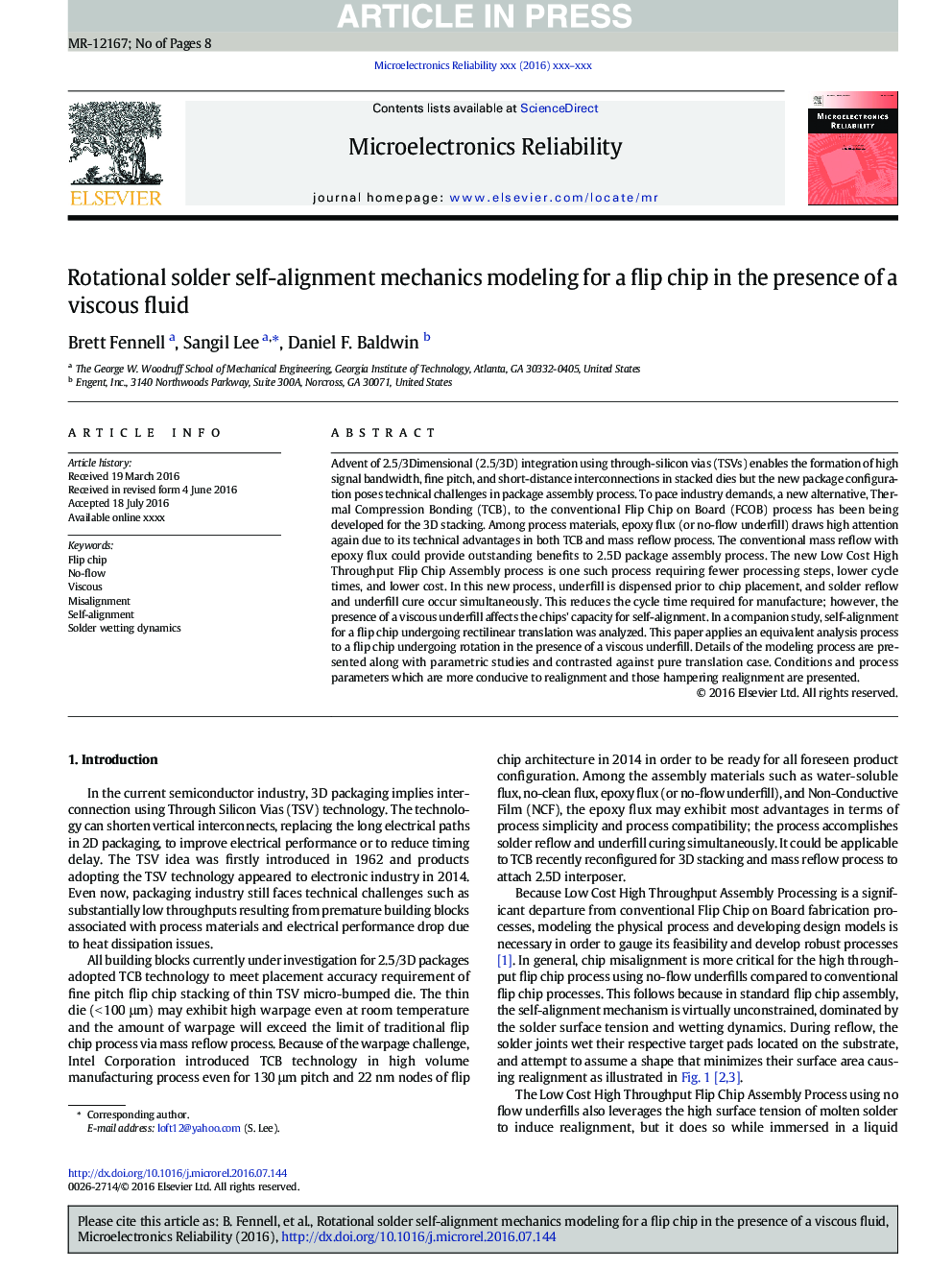| Article ID | Journal | Published Year | Pages | File Type |
|---|---|---|---|---|
| 4971754 | Microelectronics Reliability | 2016 | 8 Pages |
Abstract
Advent of 2.5/3Dimensional (2.5/3D) integration using through-silicon vias (TSVs) enables the formation of high signal bandwidth, fine pitch, and short-distance interconnections in stacked dies but the new package configuration poses technical challenges in package assembly process. To pace industry demands, a new alternative, Thermal Compression Bonding (TCB), to the conventional Flip Chip on Board (FCOB) process has been being developed for the 3D stacking. Among process materials, epoxy flux (or no-flow underfill) draws high attention again due to its technical advantages in both TCB and mass reflow process. The conventional mass reflow with epoxy flux could provide outstanding benefits to 2.5D package assembly process. The new Low Cost High Throughput Flip Chip Assembly process is one such process requiring fewer processing steps, lower cycle times, and lower cost. In this new process, underfill is dispensed prior to chip placement, and solder reflow and underfill cure occur simultaneously. This reduces the cycle time required for manufacture; however, the presence of a viscous underfill affects the chips' capacity for self-alignment. In a companion study, self-alignment for a flip chip undergoing rectilinear translation was analyzed. This paper applies an equivalent analysis process to a flip chip undergoing rotation in the presence of a viscous underfill. Details of the modeling process are presented along with parametric studies and contrasted against pure translation case. Conditions and process parameters which are more conducive to realignment and those hampering realignment are presented.
Related Topics
Physical Sciences and Engineering
Computer Science
Hardware and Architecture
Authors
Brett Fennell, Sangil Lee, Daniel F. Baldwin,
